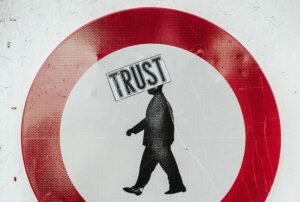One of the most exciting times for any workplace is the arrival of a new CEO, but the day Saul Sockmaker joined Community Arts Exchange (CAE) in Los Angeles, it was positively electrifying. In a parking-lot ceremony under a clear sky, most of the 360 CAE staff joined community leaders and board members to applaud Sockmaker, who ran the 20 miles from his boyhood home carrying his Day One Business Plan, which he had presented during his first interview at CAE.
Sockmaker’s hiring was one more step in what the New York Times has described as “the trend in the nonprofit sector to recruit successful business executives in the hope that their expertise would instill greater professionalism and financial acumen.” Half of CAE’s employees would be sacked within six months, but on Sockmaker’s first day, everyone was genuinely thrilled.
Community Arts Exchange was a unique 25–year-old visual arts, job training, economic research and HIV-AIDS program with a charter school, sailing camp for children with disabilities, and a large contract with Mammon Bank to train inner-ring suburban single grandparents to become tellers and derivative bond traders. CAE had grown tremendously by the time my sister-in-law Stephanie was hired as CFO three years ago, and I followed (and admired) the organization’s progress from afar. Envied by other nonprofits, CAE had slowly socked away a $90 million endowment.
CAE had always been run by its MSW founder, Marion Sandfort, so insiders were curious to see how a business-savvy MBA in charge might change things—especially someone as young and gifted as Saul Sockmaker. Board Chair Kate Barnsdorf paid tribute to Sandfort’s many accomplishments: “CAE will miss Marion Sandfort’s passion for the mission, but today’s economy demands a leader with business savvy and innovative approaches to assure CAE’s future.” Sandfort in turn thanked the board for its support and reflected that she had “tried my best and just used common sense since I didn’t have business training.”
Sockmaker made a fortune by the time he was 35, taking proceeds from selling his Internet startup to strike it big-time in Miami condos. By 2007 Sockmaker realized he needed to return to California to apply his business expertise by “giving back” to the community, and CAE’s board encouraged him to name his price.
In his second day on the job, Sockmaker changed the staff coffee service to a fair-trade dark roast, installed organic carpeting and landscaping for the entrance to the main building, shook the hand of every employee, and gave each one a copy of his Day One Business Plan. Sockmaker read every document drafted by the organization, came early, and stayed late.
At the management team meeting on day three of Sockmaker’s tenure, it was clear that a new sheriff was in town. “This enterprise has an incredible mission, but hope is neither a business plan nor a capital structure.” Sockmaker began. “In the next 90 days, there will be some restructuring. But first, we are going to do a thorough review of operations and finance. I know there are efficiencies to be gained, and we will, with the help of a consulting team from Nueva Transformación.”
The corporate language and focus on capital and enterprise was completely new to CAE and added to the sense of anticipation and optimism despite its vagueness.
Feature stories on CAE’s new president began to appear in local and national press. CAE had never received so much publicity. Three months into his new position, Sockmaker received a social entrepreneurship award from Stanford University’s Graduate School of Business.
Stephanie ended up being tapped for a new position as the chief social innovator and was dispatched to investigate promising approaches in Canada and Eastern Europe. Sockmaker hired his college roommate Jack Holloway as the new CFO, introduced as an expert in capital restructuring (who previously served as a procurement officer for the Coalition Provisional Authority in Iraq).
In the second week, after Stephanie was sent to Bratislava, Slovakia, Sockmaker and Holloway announced a “rapid conversion to a dynamic enterprise accounting format with the capabilities required by the new capital structure. We will never sacrifice short-term liquidity for long-term insolvency.”
Four months later, after several postponements, the Nueva Transformación consultants were set to deliver their findings at a special joint board-management team retreat at the Ronald Reagan Ranch in Santa Barbara. Longtime staffers were nervous, since recent consultant interviews were zeroing in on ROI, growth rates, profit margins—measures never discussed under the previous leadership—and asked for program elimination hints. Many were impossible questions to answer, since the dynamic enterprise accounting format had yet to produce a single report, and Holloway had the old Peachtree system purged to prevent identity theft and certain “security issues.”
Sign up for our free newsletters
Subscribe to NPQ's newsletters to have our top stories delivered directly to your inbox.
By signing up, you agree to our privacy policy and terms of use, and to receive messages from NPQ and our partners.
As the former CFO doing her first significant international travel, Stephanie told me that she wondered what was going on, but said, “Honestly, I am so completely inspired by this research and the amazing people I’ve met, from Calgary to Bucharest, I just need to let the CAE accounting system sort itself out.” “Besides, even though I wasn’t consulted about changing the software, I’m not worried, because I know there is no way the finance committee would change the endowment asset allocations they set just six months ago.”
So how should nonprofit board retreats be organized? thought Sockmaker. Every new leader brings his own style, and understandably wants to show off his knowledge, contacts, and abilities in the best possible light.
Nothing, however, prepared the old-timers on the board and staff for the opening reception with airport shuttles, valet parking, the lieutenant governor and various B-list celebrities linked to charitable causes, roving trays of sauvignon blanc, a Cuban salsa band—brought in from Stockton—and, later, Nicaraguan cigars and Absinthe.
On the first day of the retreat, there was the Big Presentation: the product of four months of exploration and analysis. Other than the new financial system and about 20 new hires in finance and administration, Sockmaker had been surprisingly hands-off after the first few days. He reduced his number of direct reports and had reduced his time in the office to only two days a week.
Sockmaker’s absence and abstraction had only added to the sense of drama: something big was going to happen.
Alas, after all the buildup, the talk was mere puffery. Going to scale with 1,200 percent growth in two years and dividing CAE into three “impact centers” with unpronounceable acronyms. Yet the guests and board members were so jazzed that it was exciting and inspiring. What was not possible was determining precisely which things would change.
That became clear the following Monday, when five of the long-standing programs were eliminated—and their associated staff dismissed—including CAE’s two largest sources of revenue. In their place were six new initiatives that no one on program staff had ever heard of.
Two months later, after still no financial reports, Sockmaker abruptly announced he was leaving—within the week. His new post? He was to become the director of the Center for Social Entrepreneurship at Stanford’s business school and would train the next generation of social capitalists.
Unfortunately, it was later discovered that an undisclosed but daring investment of CAE’s entire endowment into auction-rate securities had gone south about the same time. The buildings had been pledged as collateral, the new programs were without revenue, and the auction-rate securities became suddenly illiquid.
A smaller but wiser CAE is now 30 percent of its former self, with Stephanie recalled from Dubrovnik for emergency cleanup duty. Like a country having second thoughts after its first MBA president, Community Arts Exchange has decided to head back to its roots. If you know of someone with solid nonprofit management experience, please encourage them to apply.
Phil Anthrop is a consultant for foundations in the G8 countries.













